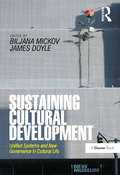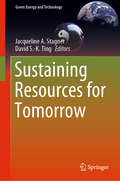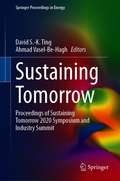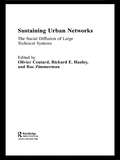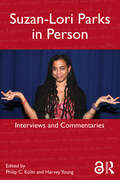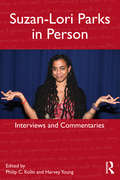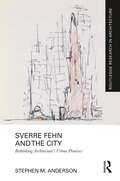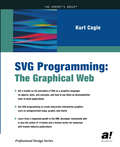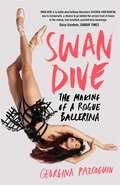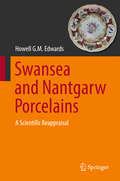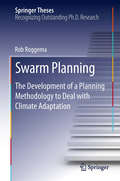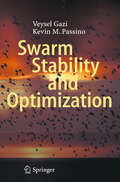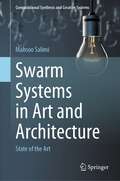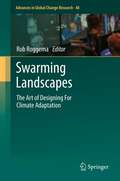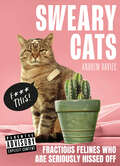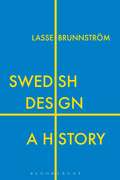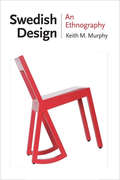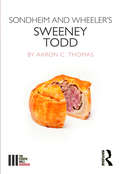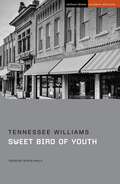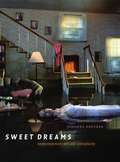- Table View
- List View
Sustaining Cultural Development: Unified Systems and New Governance in Cultural Life
by Biljana Mickov James DoyleIn Sustaining Cultural Development, Biljana Mickov and James Doyle argue that effective programmes to promote greater participation in cultural life require substantial investment in research and strategic planning. Using studies from contributors throughout Europe, they look at ways to promote cultural life as the centre of the broader sustainable development of society. These studies illustrate how combining cultural identity, cultural diversity and creativity with increased participation of citizens in cultural life improves harmonized cultural development and promotes democracy. They indicate a shift from traditional governance of the cultural sector to a new, more horizontal, approach that links cultural workers at different levels in different sectors and different locations. This book will stimulate debate amongst cultural leaders, city managers and other policy makers, as well as serving as a resource for researchers and those teaching and learning on a range of post-graduate courses and programmes.
Sustaining Resources for Tomorrow (Green Energy and Technology)
by Jacqueline A. Stagner David S.-K. TingThis book reflects the current state of knowledge on sustainability in a wide range of fields, from engineering to agriculture, to education. Though primarily intended to offer an update for experts and researchers in the field, it can also be used as a valuable educational tool for relevant undergraduate and graduate courses. Key aspects covered include the better and more responsible engineering and management of energy conversion processes, the development of renewable energy technologies, and improvements in conventional energy utilization and food production. In addition, the book addresses green buildings, the green economy, waste and recycling, water, ecopolitics and social sustainability.
Sustaining Tomorrow: Proceedings of Sustaining Tomorrow 2020 Symposium and Industry Summit (Springer Proceedings in Energy)
by David S.-K. Ting Ahmad Vasel-Be-HaghThis book includes the proceedings of the Sustaining Tomorrow 2020 symposium and summit which bring together research from experts in academia, industry, and policy arenas to uncover the challenges and to forge solutions to sustain tomorrow. To sustain tomorrow, we need to continuously make headway in Agriculture, Engineering, Energy, Environment, Economics, Water, among other necessities. This book disseminates the most recent advances in these fields and promotes collaborations to maximize opportunities for innovative solutions.Though primarily intended to offer an update for experts and researchers in the field, this book is equally useful as a valuable educational tool for relevant undergraduate and graduate courses. Key aspects covered include the better and more responsible engineering and management of energy conversion and conservation processes, the furthering of renewable energy technologies, improvements in water-agriculture nexus and energy-environment-economics relationship, and endorsing education, implementation, and evaluation of all-embracing sustainability.
Sustaining Urban Networks: The Social Diffusion of Large Technical Systems (Networked Cities Series)
by Olivier Coutard Richard E. Hanley Rae ZimmermanConsidering sustainability in its economic, environmental and social contexts, the contributors take stock of previous research on large technical systems and discuss their sustainability from three main perspectives: uses, cities, and rules and institutions.
Sustaining Urban Networks: The Social Diffusion of Large Technical Systems (Networked Cities Series)
by Olivier Coutard Richard Hanley Rae ZimmermanConsidering sustainability in its economic, environmental and social contexts, the contributors take stock of previous research on large technical systems and discuss their sustainability from three main perspectives: uses, cities, and rules and institutions.
Suzan-Lori Parks in Person: Interviews and Commentaries
by Philip C. Kolin Harvey YoungThis collection of interviews offers unprecedented insight into the plays and creative works of Suzan-Lori Parks, as well as being an important commentary on contemporary theater and playwriting, from jazz and opera to politics and cultural memory. Suzan-Lori Parks in Person contains 18 interviews, some previously untranscribed or specially undertaken for this book, plus commentaries on her work by major directors and critics, including Liz Diamond, Richard Foreman, Bonnie Metzgar and Beth Schachter. These contributions combine to honor the first African American woman to receive the Pulitzer Prize in drama, and explore her ideas about theater, history, race, and gender. Material from a wide range of sources chronologically charts Parks’s career from the 1990s to the present. This is a major collection with immediate relevance to students of American/African-American theater, literature and culture. Parks’s engaging voice is brought to the fore, making the book essential for undergraduates as well as scholars.
Suzan-Lori Parks in Person: Interviews and Commentaries
by Philip C. Kolin Harvey YoungThis collection of interviews offers unprecedented insight into the plays and creative works of Suzan-Lori Parks, as well as being an important commentary on contemporary theater and playwriting, from jazz and opera to politics and cultural memory. Suzan-Lori Parks in Person contains 18 interviews, some previously untranscribed or specially undertaken for this book, plus commentaries on her work by major directors and critics, including Liz Diamond, Richard Foreman, Bonnie Metzgar and Beth Schachter. These contributions combine to honor the first African American woman to receive the Pulitzer Prize in drama, and explore her ideas about theater, history, race, and gender. Material from a wide range of sources chronologically charts Parks’s career from the 1990s to the present. This is a major collection with immediate relevance to students of American/African-American theater, literature and culture. Parks’s engaging voice is brought to the fore, making the book essential for undergraduates as well as scholars.
Sverre Fehn and the City: Rethinking Architecture’s Urban Premises (Routledge Research in Architecture)
by Stephen M. AndersonThe urban attentions of Pritzker Laureate Sverre Fehn (1924–2009) are extensive, but as yet virtually unexplored. This book examines ten select projects to illuminate Fehn’s approach to the city, the embodiment of that thinking in his designs, and the broader lessons those efforts offer for better understanding the relationship between architecture and urban life, with unignorable implications for emergent urban architecture and its address of sociological and ecological crises. Wary of large-scale planning proposals or the erasure of existing urban patterns, Fehn offered an uncommon and profoundly vibrant approach to urbanism at the scale of the single architectural project. His writings, constructed buildings, competition entries, and lectures suggest opportunities for reinvigorating architecture’s engagement with the city, and provoke a rethinking of concepts foundational to its theorization. What is the nature of urbanity? What is the relationship of urbanity to the natural world? What is the role of architecture in the provision and sustenance of urban life? While exploring this territory will expand our knowledge of an architect central to key developments of late modernism, the range of the book and the arguments developed therein delineate far broader aims: a fuller understanding of architecture’s urban promise.
Sverre Fehn and the City: Rethinking Architecture’s Urban Premises (Routledge Research in Architecture)
by Stephen M. AndersonThe urban attentions of Pritzker Laureate Sverre Fehn (1924–2009) are extensive, but as yet virtually unexplored. This book examines ten select projects to illuminate Fehn’s approach to the city, the embodiment of that thinking in his designs, and the broader lessons those efforts offer for better understanding the relationship between architecture and urban life, with unignorable implications for emergent urban architecture and its address of sociological and ecological crises. Wary of large-scale planning proposals or the erasure of existing urban patterns, Fehn offered an uncommon and profoundly vibrant approach to urbanism at the scale of the single architectural project. His writings, constructed buildings, competition entries, and lectures suggest opportunities for reinvigorating architecture’s engagement with the city, and provoke a rethinking of concepts foundational to its theorization. What is the nature of urbanity? What is the relationship of urbanity to the natural world? What is the role of architecture in the provision and sustenance of urban life? While exploring this territory will expand our knowledge of an architect central to key developments of late modernism, the range of the book and the arguments developed therein delineate far broader aims: a fuller understanding of architecture’s urban promise.
SVG Programming: The Graphical Web
by Kurt CagleLeading expert Kurt Cagle gives a complete guide to the creation of powerful Scalable Vector Graphics (SVG). Intermingling SVG instruction with insightful discussion of key topics such as coordinate systems and attributes, transformations, animation, and image generation, readers are provided with a comprehensive guide to making the most of this exciting new Web standard.Cagle goes directly into the heart of SVG development after a brief introduction of the SVG standard. Readers are presented with an overview of SVG fundamentals and usage and given numerous examples as a practical introduction to language implementation. This material sets the stage for later chapters, which expand upon this basic material to introduce integral SVG concepts such as transformations, shapes, text manipulation, and the incorporation of images, gradients, patterns and masks. The final chapters demonstrate the true power of SVG, offering insight into animation, interactivity, filters, and automated graphic generation.
Swan Dive: The Making of a Rogue Ballerina
by Georgina PazcoguinAward-winning New York City Ballet soloist Georgina Pazcoguin, aka the Rogue Ballerina, gives readers a backstage tour of the real world of elite ballet – the gritty, hilarious, sometimes shocking truth you don’t see from the orchestra circle.In this love letter to the art of dance and the sport that has been her livelihood, NYCB’s first Asian American female soloist Georgina Pazcoguin lays bare her unfiltered story of leaving small-town Pennsylvania for New York City and training amid the unique demands of being a hybrid professional athlete/artist, all before finishing high school. She pitches us into the fascinating, whirling shoes of dancers in one of the most revered ballet companies in the world with an unapologetic sense of humour about the cutthroat, survival-of-the-fittest mentality at NYCB. Some swan dives are literal: even in the ballet, there are plenty of face-plants, backstage fights, late-night parties, and raucous company bonding sessions.Rocked by scandal in the wake of the #MeToo movement, NYCB sits at an inflection point, inching toward progress in a strictly traditional culture, and Pazcoguin doesn’t shy away from ballet’s dark side. She continues to be one of the few dancers openly speaking up against the sexual harassment, mental abuse, and racism that in the past went unrecognized or was tacitly accepted as par for the course – all of which she has painfully experienced firsthand.Tying together Pazcoguin’s fight for equality in the ballet with her infectious and deeply moving passion for her craft, Swan Dive is a page-turning, one-of-a-kind account that guarantees you'll never view a ballerina or a ballet the same way again.
Swansea and Nantgarw Porcelains: A Scientific Reappraisal
by Howell G.M. EdwardsThis book describes a holistic study of the porcelain manufactured at Nantgarw and Swansea in the first quarter of the 19th Century, using both scientific analytical data and historical provenancing. This porcelain is acclaimed as some of the finest and most translucent porcelain ever produced. These two porcelain factories are linked through the artistic and creative activities of the enigmatic William Billingsley and had a strictly limited production over only three or four years during the period 1812-1820. The earliest chemical analysis of these porcelains were undertaken almost 100 years ago and are compared with the results of more recent analyses The chemical composition of these porcelains, their artistic decoration and the struggle to maintain quality production is reviewed. Scientific explanations are proposed for the characteristic Swansea duck-egg porcelain translucency and for the Nantgarw iridescence. The book is well illustrated throughout and affords a good basis for the further in-depth study of Swansea and Nantgarw porcelains.
Swarm Planning: The Development of a Planning Methodology to Deal with Climate Adaptation (Springer Theses)
by Rob RoggemaThis book shows that the problem of climate adaptation, which is described in social planning terms as ‘wicked,’ is at odds with the contemporary practice of spatial planning. The author proposes a new adjusted framework which is more adaptable to unpredictable, wicked, dynamic and non-linear processes. The inspiration for this new method is the behaviour of swarms: bees, ants, birds and fish are capable of self-organization, which enables the system to become less vulnerable to sudden environmental changes. The framework proposed in Swarm Planning consists of these four elements: Two levels of complexity, the first being the whole system and the second its individual components. Each of these has different attributes for adapting to change. Five layers, consisting of networks, focal points, unplanned space, natural resources and emerging occupation patterns. Each layer has its own spatial dynamic, and each is connected to a spatial scale. Non-linear processes, which emerge in different parts of the framework and include emerging patterns, connectedness and tipping points among others. Two planning processes; the first, ‘from small to large’ works upward from the slowest changing elements to more rapidly-changing ones. The second, ‘on the list of partners’ addresses each layer from networks through emerging occupation patterns. Swarm Planning applies this framework to a series of pilot studies, and appraises its performance using criteria for an adaptive landscape. The results show that the use of the Swarm Planning Framework reduces the vulnerability of landscapes as well as the impact of climate hazards and disasters, improves response to unexpected hazards and contains adaptation strategies. “This book is a must for planners in government and the private sector as it outlines the concept, strategies and techniques for swarm planning. It is also an important guide for policymakers looking to engage communities in a dialogue about the adaptation planning process.”Professor John Martin, La Trobe University “The ultimate value of the book lies in encouraging the planning community to consider options that go far beyond those offered by business-as-usual planning methodologies developed for a set of operating conditions that are fast becoming obsolete. As such it makes an important and much needed contribution to the field.”Assistant Professor Dr. Chrisna du Plessis, University of Pretoria
Swarm Stability and Optimization
by Veysel Gazi Kevin M. PassinoSwarming species such as flocks of birds or schools of fish exhibitfascinating collective behaviors during migration and predatoravoidance. Similarly, engineered multi-agent dynamic systems such as groups of autonomous ground, underwater, or air vehicles (“vehicle swarms”) exhibit sophisticated collective behaviors while maneuvering.In this book we show how to model and control a wide range of suchmulti-agent dynamic systems and analyze their collective behaviorusing both stability theoretic and simulation-based approaches. Inparticular, we investigate problems such as group aggregation, socialforaging, formation control, swarm tracking, distributed agreement,and engineering optimization inspired by swarm behavior.
Swarm Systems in Art and Architecture: State of the Art (Computational Synthesis and Creative Systems)
by Mahsoo SalimiThis book presents the recent computational developments inspired by swarms in art known as swarm art and discusses applying swarm intelligence concepts in architecture. Non-human art is a great leap in the evolution of contemporary art, removing the requirement of an artist’s production from the creative process. Furthermore, it is a critical declaration in opposition to the anthropomorphic vision which is so destructive for all other life forms and the planet’s ecology. When accepted and integrated into human culture, non-human art done by artificial systems or machines boosts creativity and stimulates innovative fusions. We analyze 120 swarm systems with unique and diverse conceptual contexts, agent design, and audience engagement that can be utilized as inspiration for future projects or to design new swarm algorithms by artists, architects, or computer scientists.
Swarming Landscapes: The Art of Designing For Climate Adaptation (Advances in Global Change Research #48)
by Rob RoggemaThis book advocates a fresh approach to planning that anticipates, rather than reacts to, the changes in climate currently in process. Today’s spatial planning procedures rely on historical evidence instead of preparing for factors that by definition lie in the future, yet which are relatively uncontroversial: shortages of water, sea level rise and rises in average temperatures being but three examples. Arguing for more flexibility, the contributors view ‘complexity’ as the key to transforming the way we plan in order to better equip us to face uncertainties about our future environment.
Sweary Cats
by Andrew DaviesUnderneath that chilled exterior is a potty-mouthed mouser ready to let rip. Sweary Cats features over 60 fabulous felines itching and scratching to tell it like it is, either through withering sarcasm or deeply insulting remarks.
Swedish Design: A History
by Lasse BrunnströmSwedish Design: A History provides a fascinating and comprehensive introduction to the development of design in Sweden from the mid-nineteenth century to the early twenty-first.Leading design historian Lasse Brunnström traces the move from artisanal crafts production to the mass production and consumption of designed objects, a process by which the role and profile of the designer became increasingly important. His survey, richly illustrated with images of the designed objects discussed, takes in forms of design traditionally associated with Sweden, such as household objects and textiles, while also considering some less-written about genres such as industrial and graphic design. Brunnström questions many established ideas about design in Sweden, notably its aesthetics and its relationship to Sweden's national and political culture. He argues that the history of design in Sweden has been far more complex and less straightforwardly 'blond' than hitherto understood.
Swedish Design: A History
by Lasse BrunnströmSwedish Design: A History provides a fascinating and comprehensive introduction to the development of design in Sweden from the mid-nineteenth century to the early twenty-first.Leading design historian Lasse Brunnström traces the move from artisanal crafts production to the mass production and consumption of designed objects, a process by which the role and profile of the designer became increasingly important. His survey, richly illustrated with images of the designed objects discussed, takes in forms of design traditionally associated with Sweden, such as household objects and textiles, while also considering some less-written about genres such as industrial and graphic design. Brunnström questions many established ideas about design in Sweden, notably its aesthetics and its relationship to Sweden's national and political culture. He argues that the history of design in Sweden has been far more complex and less straightforwardly 'blond' than hitherto understood.
Swedish Design: An Ethnography (Expertise: Cultures and Technologies of Knowledge)
by Keith M. MurphySwedish designers are noted for producing distinctive and elegant forms; their furniture and household goods have an especially loyal following around the world. Design in Sweden has more than just an aesthetic component, however. Since at least the late nineteenth century, Swedish politicians and social planners have viewed design as a means for advocating and enacting social change and pushing for a more egalitarian social organization. In this book, Keith M. Murphy examines the special relationship between politics and design in Sweden, revealing in particular the cultural meanings this relationship holds for Swedish society.Over the course of fourteen months of research in Stockholm and at other sites, Murphy conducted in-depth interviews with various players involved in the Swedish design industry—designers, design instructors, government officials, artists, and curators—and observed several different design collectives in action. He found that for Swedes design is never socially or politically neutral. Even for common objects like furniture and other household goods, design can be labeled "responsible," "democratic," or "ethical"— descriptors that all neatly resonate with the traditional moral tones of Swedish social democracy. Murphy also considers the example of Ikea and its power to politicize perceptions of the everyday world. More broadly, his book serves as a model for an anthropological approach to the study of design practice, one that accounts for the various ways in which order is purposefully and meaningfully imposed by designers on the domains of human life, and the consequences those impositions have on the social worlds in which they are embedded.
Sweeney Todd (The\fourth Wall Ser.)
by Aaron C. ThomasSweeney Todd, the gruesome tale of a murderous barber and his pastry chef accomplice, is unquestionably strange subject matter for the musical theatre – but eight Tony awards and enormous successes on Broadway and the West End testify to its enduring popularity with audiences. Written by Hugh Wheeler, with music and lyrics by Stephen Sondheim, the musical premiered in 1979 and has seen numerous revivals, including Tim Burton's 2007 film version. Aaron C. Thomas addresses this darkly funny piece with fitting humour, taking on Sweeney Todd’s chequered history and genre, its treatment of violence and cannibalism, and its sexual politics.
Sweeney Todd
by Aaron C. ThomasSweeney Todd, the gruesome tale of a murderous barber and his pastry chef accomplice, is unquestionably strange subject matter for the musical theatre – but eight Tony awards and enormous successes on Broadway and the West End testify to its enduring popularity with audiences. Written by Hugh Wheeler, with music and lyrics by Stephen Sondheim, the musical premiered in 1979 and has seen numerous revivals, including Tim Burton's 2007 film version. Aaron C. Thomas addresses this darkly funny piece with fitting humour, taking on Sweeney Todd’s chequered history and genre, its treatment of violence and cannibalism, and its sexual politics.
Sweet Bird of Youth (Student Editions)
by Tennessee Williams'Tennessee Williams's mordantly funny and deeply troubled meditation on the desperate dismay of ageing and the iniquities of racial bigotry.' INDEPENDENT 'It's a wonderfully weird play, starting claustrophobic, losing intensity as it introduces the locals… then regrouping for a devastating second half… This unruly, unforgettable play takes its unpredictable course to something that makes you feel afresh our powerlessness against time.' THE TIMES When Chance Wayne left the small town of St. Cloud, he did so with the ambition of being an actor: now, many years later, he returns as a gigolo and the companion of faded movie star Alexandra del Lago. But can Chance convince the town he did actually make it big and win over his childhood sweetheart? Or will the mistakes of his past punish him still? Sweet Bird of Youth is Tennessee Williams's 1959 Broadway hit that explores the social and political climate of 1950s America, at a time when sexual freedom was a critical issue. This edition includes an introduction by Alison Walls that explores the play's production history as well as the dramatic, thematic and academic debates that surround it.
Sweet Bird of Youth (Student Editions)
by Tennessee Williams'Tennessee Williams's mordantly funny and deeply troubled meditation on the desperate dismay of ageing and the iniquities of racial bigotry.' INDEPENDENT 'It's a wonderfully weird play, starting claustrophobic, losing intensity as it introduces the locals… then regrouping for a devastating second half… This unruly, unforgettable play takes its unpredictable course to something that makes you feel afresh our powerlessness against time.' THE TIMES When Chance Wayne left the small town of St. Cloud, he did so with the ambition of being an actor: now, many years later, he returns as a gigolo and the companion of faded movie star Alexandra del Lago. But can Chance convince the town he did actually make it big and win over his childhood sweetheart? Or will the mistakes of his past punish him still? Sweet Bird of Youth is Tennessee Williams's 1959 Broadway hit that explores the social and political climate of 1950s America, at a time when sexual freedom was a critical issue. This edition includes an introduction by Alison Walls that explores the play's production history as well as the dramatic, thematic and academic debates that surround it.
Sweet Dreams: Contemporary Art and Complicity
by Johanna DruckerJohanna Drucker's "sweet dream" is for a new and more positive approach to contemporary art. Calling for a revamping of the academic critical vocabulary used to discuss art into one more befitting current creative practices, Drucker argues that contemporary art is fully engaged with material culture—yet still struggling to escape the oppositional legacy of the early twentieth-century avant-garde. Drucker shows that artists today are aware of working within the ideologies of mainstream culture and have replaced avant-garde defiance with eager complicity. Finding their materials at flea markets or exploring celebrity culture, contemporary artists have created a vibrantly participatory movement that exudes enthusiasm and affirmation—all while critics continue to cling to an outmoded vocabulary of opposition and radical negativity that defined modernism's avant-garde. At the cutting edge of new media research, Drucker surveys a wide range of exciting contemporary artists, demonstrating their clear departure from the past and petitioning viewers and critics to shift their terms and sensibilities as well. Sweet Dreams is a testament to the creative processes and self-conscious heterogeneity of art today as well as a revolutionary effort to solicit collaboration that will encourage the production of imaginative thought and contribute to contemporary life.
